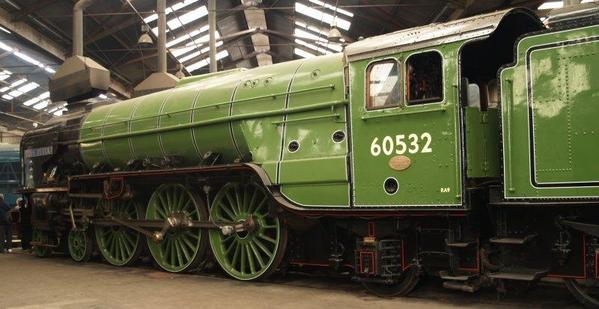To add a neophyte perspective, let me tell this little story.
My two favorite steam videos are "Running that New River Train" and "No. 261 New River Adventure." In both, the camera is on Rich as he runs both locomotives up grade in the New River Gorge and he gives a running commentary. When the engines slip he shows the proper technique of recovery. As he said in above in this thread, he closes the throttle immediately and pulls it out when the locomotive has recovered. He then puts the sanders on as well.
Not counting the years of running my Lionel's, the sole experience I have had running a real, 4'8 1/2" steam locomotive was at the Valley Railroad in Essex CT. It was on their No. 40, a 1921 built, 141 ton 2-8-2 Alco during one of the "Your Hand On The Throttle" days. With the payment of a hefty fee, you too can be a steam engineer for an hour. After a 1 hour class, you get your turn of the eight slots that day. My turn was with two Valley veterans; Ken Blandina, fireman and the late Pete Frederickson, instructor engineer.
The Valley Railroad is hard by the Connecticut River and thus has a fairly flat profile. None the less on this cool, damp November day, on the northbound trip running light (pulling no cars) No. 40 started to slip. I found out that in the engineers seat, you do not see a slip so much as hear it and to a lesser degree, feel it.
Then, purely based on my watching Rich so many times in a railfan video, I knew what to do. I slammed the throttle closed, waited till the slip stopped and then pulled it out again.
Pete, who was at my left shoulder, had started to go for the throttle to do the same, but I beat him to it. I must admit, it was fun to see his eyes pop at this newbie's action.
(So that I don't paint of picture of perfection, I drove Ken crazy by leaving on the bell too long after every crossing.)
In any event, I always find it astonishing how one person's action, such as Rich's, can affect another's, even years later.
When I met up with Rich a few months later, I mentioned I had a WHOLE HOUR of engineer experience and when could I run No. 765? He said, "Only 199 more hours to go!"
Thanks Rich.
(The following image was taken by Ken showing me running No. 40 with Pete on the right.)















